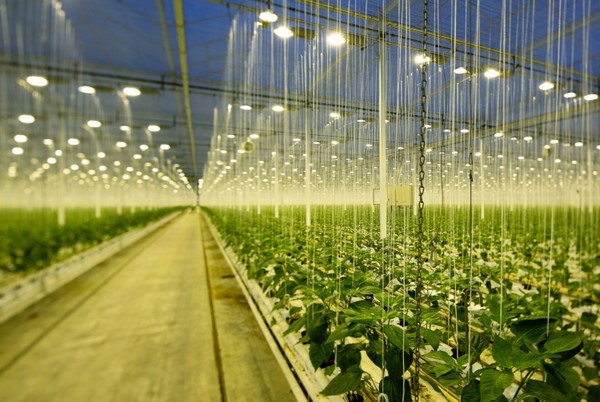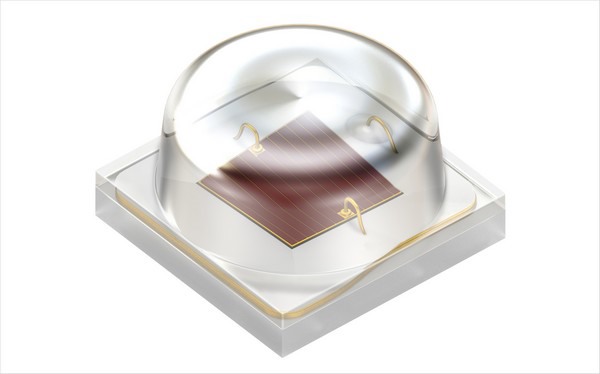Every plant needs a certain amount of light in different wavelengths for optimal growth. Special luminaires in greenhouses and indoor farms combine red, blue, and white LEDs, depending on the light recipe required for the plant. Current LED fixtures often have a lambertian primary lens and no secondary optic, or a simple glass cover, which lead to hotspots with a high concentration of light directly under the luminaire. The result is areas with different intensities of illumination, causing inconsistent yields. Currently, these lighting gaps are commonly filled with additional fixtures. ams OSRAM has solved this problem with the Oslon Square Batwing, which has a special shape of optics to enable customers to simplify their designs, likely reduce fixtures, and be more efficient.

When it comes to horticulture lighting, growers often face light uniformity issues with the Pitch-to-Distance ratio. Growers currently try to close the lighting gaps with a higher number of luminaires or accept that some plants receive more light than others, but this is not a satisfying solution because the main aim for the grower is to get the highest possible yield at the lowest possible cost. To address this issue, ams OSRAM combined its Oslon Square LED for horticulture lighting with a new primary optic.
The new batwing optics enable a special radiation pattern of light that looks like wings. The wide beam angle of 140° and the rectangular shape of light distribution enables higher uniformity and optimum utilization of space in greenhouses. The wider angle also allows for a larger distance between the luminaires and thus a possible reduction of fixtures. Compared to lighting systems using LEDs with secondary Bat Wing optics, the primary Bat Wing lens solution can offer up to 5% higher system efficiency.

The Oslon Square family is now extended with four new devices - hyper red (660nm), deep blue (450nm), far-red (730nm), and horti white - covering all necessary wavelengths for horticulture applications. All versions feature a compact footprint of only 3,0 mm x 3,0 mm, excellent radiant flux maintenance, and a lifetime of more than 102,000 hours. Besides this, the products come with efficacy values. The hyper red version achieves an optical output of 1042 mW at 700 mA causing a Wall-Plug-Efficiency (WPE) of 74%.
For more information:
ams OSRAM
[email protected]
www.ams-osram.com
